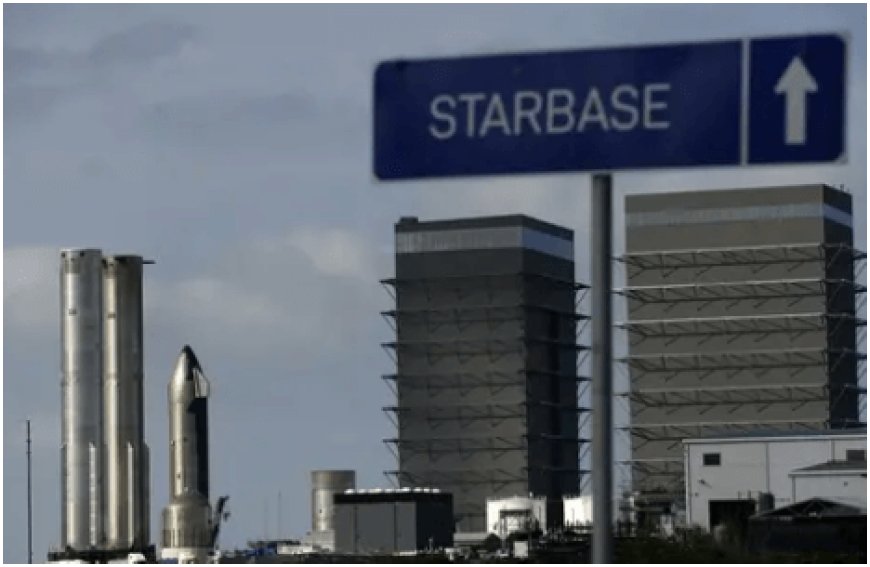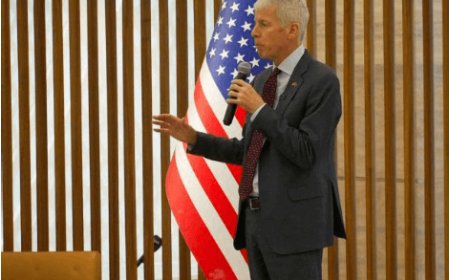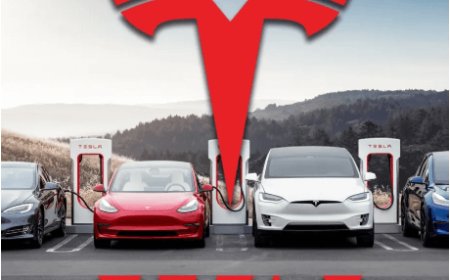Elon Musk's Starbase Officially Becomes Texas' Newest City
Elon Musk's Starbase Officially Becomes Texas' Newest City

In a move that blends science fiction with civic reality, Elon Musk’s ambitious dream has taken yet another bold leap forward. The SpaceX facility in South Texas, known for launching rockets to the International Space Station and testing futuristic spacecraft, has now achieved a new milestone: it has officially been incorporated as the city of Starbase.
This decision, following a successful local vote, represents a landmark moment for the region and a powerful symbol of the evolving relationship between private industry, government, and community in the 21st century.
Starbase, located in Cameron County near the small village of Boca Chica, has been the focal point of Musk’s vision to make humanity multiplanetary. The area, once a quiet stretch of coastal land dotted with modest homes and wildlife, has undergone a dramatic transformation since SpaceX began launching operations there in the mid-2010s. Over the years, the location has seen an influx of engineers, scientists, construction teams, and an ever-growing infrastructure supporting one of the most innovative aerospace programs in the world. Now, with the official designation of Starbase as a city, the site steps into a new chapter—one that intertwines governance, space exploration, and urban development under a single banner.
The move to incorporate Starbase has not been without controversy. Early discussions raised eyebrows among residents and legal experts alike, particularly due to the speed and influence with which Musk pushed the initiative forward. Some locals expressed concerns about being edged out or overshadowed by the sprawling ambitions of a multibillion-dollar enterprise. However, the official vote, held under Texas law allowing incorporation with resident backing, suggests that at least a portion of the community supports the idea—or sees long-term benefits from aligning with one of the world’s most high-profile tech leaders.
Musk had hinted at his plans for Starbase as early as 2021, tweeting cryptic messages about creating a city dedicated to space and innovation. At the time, many dismissed the idea as a publicity stunt or yet another eccentric move by the billionaire entrepreneur. Yet behind the scenes, SpaceX continued to invest heavily in the area. Roads were improved, facilities expanded, and legal teams worked to navigate the complex requirements of municipal incorporation. The company also began engaging in negotiations with Cameron County officials, laying the groundwork for what has now become a reality.
With city status comes both symbolic and practical implications. Starbase will now have the authority to form a municipal government, levy taxes, establish city services, and make zoning decisions that could accelerate its development as a hub for space technology. For SpaceX, this autonomy could prove invaluable, allowing the company to streamline operations, control development more efficiently, and attract talent with the promise of living in a city built entirely around space exploration. At the same time, this development raises important questions about corporate governance, transparency, and the role of private enterprise in shaping civic life.
Economically, the implications are enormous. South Texas, a region historically underserved and often economically stagnant, stands to gain significantly from the formal establishment of Starbase. Property values have already begun to climb, and ancillary industries—from hospitality to education—are poised to benefit from the influx of professionals and tourists alike. For many in Cameron County, Starbase represents a beacon of possibility, a sign that the area is no longer a forgotten corner of the state but a launchpad to the future. This potential has already attracted new investors, entrepreneurs, and developers looking to establish a presence in the shadow of SpaceX’s expanding domain.
Culturally, the creation of Starbase marks a fascinating intersection of identity, community, and aspiration. The very idea of a city devoted to space travel challenges traditional notions of what a municipality should be. Instead of being organized around industry, agriculture, or historical legacy, Starbase is organized around the dream of leaving Earth altogether. It becomes a symbol not only of technological ambition but of a new civic model—one where innovation, exploration, and corporate vision converge to create something entirely unprecedented.
Musk himself has often spoken about the need for humanity to become a multiplanetary species, driven in part by existential concerns such as climate change, overpopulation, or planetary catastrophe. Starbase, in many ways, is his terrestrial experiment in preparing for such a future. It’s a place where rockets are built and tested with the intent of reaching Mars, but also where a new kind of human settlement is being trialed—one that blends science, commerce, and governance in a way that may eventually be replicated beyond Earth’s atmosphere.
Yet for all its promise, the city of Starbase will need to grapple with the same challenges that face any newly incorporated municipality. Infrastructure demands, environmental impacts, and social integration will all play significant roles in determining the city's long-term success. There are also legal considerations surrounding land use, eminent domain, and the rights of existing residents who may not share Musk’s vision. Environmental groups have voiced concern about the impact of rocket launches on the nearby wildlife preserve, home to endangered species and delicate ecosystems. Balancing these competing interests will be a test of whether a city founded on idealism can also deliver pragmatic governance.
Still, Musk and SpaceX remain undeterred. With an eye on the stars and feet firmly planted in the Texas soil, Starbase is being shaped into more than just a launch site—it’s becoming a living, breathing example of how space-age dreams can begin at home. As Starbase grows, it may serve as a prototype for future spaceports, off-world colonies, or tech-driven municipalities that redefine the relationship between people and place.
Only time will tell whether Starbase becomes a thriving urban center or a cautionary tale of ambition unchecked. For now, it stands as a testament to the power of vision and the malleability of borders in a world where technology and imagination increasingly set the course of human progress. The story of Starbase is far from over, but its beginning marks a moment that historians may one day look back on as the dawn of a new kind of city—one built not just for the present, but for the stars.
What's Your Reaction?
 Like
0
Like
0
 Dislike
0
Dislike
0
 Love
0
Love
0
 Funny
0
Funny
0
 Angry
0
Angry
0
 Sad
0
Sad
0
 Wow
0
Wow
0














































